Remembering Dr. Philip Norman’s Impact on the Asthma and Allergy Community
If you’ve ever benefited from immunotherapy (allergy shots, SLIT or oral immunotherapy), you can thank Dr. Philip Sidney Norman.
Dr. Norman put allergy research on the map. He is known as the “father of modern immunotherapy for allergic disease” and even coined the term “allergen immunotherapy.” As an allergist and researcher for more than 50 years, he published 237 research papers and more than 100 book chapters and reviews. And for many decades, he was an important part of the Asthma and Allergy Foundation of America (AAFA).
“Phil was a pioneer in our field. His carefully designed, controlled and properly blinded clinical studies established the principles guiding the use of allergen immunotherapy today,” shared Peter Socrates Creticos, M.D., associate professor of medicine in the Division of Allergy & Clinical Immunology at Johns Hopkins Medicine and Clinical Director of Creticos Research Group. Dr. Creticos worked with Dr. Norman for more than 30 years and has written several articles about the impact of Dr. Norman’s legendary work.
Sadly, on Aug. 2, 2019, a few days shy of his 95th birthday, Dr. Norman passed away. He was a humble man known for always putting other people before himself. He was inspired by music, science and religion. He sang in the church choir and was a practicing clinician until he retired in 2011 at age 87. He was so humble that a lot of his friends never knew the impact he had on allergy research.
Dr. Norman’s controlled studies of immunotherapy for ragweed are credited for today’s standardized diagnosis and treatment of allergic diseases. This work began when he studied the structure and chemistry of allergens. It included isolating a major ragweed-pollen allergen called Amb a 1.
He also studied nasal corticosteroid sprays, including organizing a blinded clinical trial of a nasal spray to treat hay fever with Walter Winkenwerder, M.D. for Merck & Co. As a result of their research, the treatment known as Turbinaire was approved by the FDA.
Interestingly, in Dr. Norman’s memoir, he describes a different research finding as his greatest contribution to the medical field. In 1978, in collaboration with David G. Marsh, Ph.D., he found that human serum albumin (a protein found in the human blood) maintained allergen extract potency for intradermal skin testing better than other buffers.
As a result of his findings, Dr. Norman stated that “very quickly, the FDA and commercial suppliers adopted the use of albumin in diluting buffers. It continues to this day and may be my most enduring contribution to the practice of allergy.”
The Man Behind the Science
Dr. Norman was born in Pittsburg, Kansas, in 1924. At 16, he graduated high school and went to Kansas State Teachers College (KSTC) with aspirations to become a speech and dramatics teacher. After two-and-a-half years at KSTC, his studies were interrupted by World War II, at which point he served three years in the Army. He trained and served as a weather observer which ignited his interest in science and mathematics. Afterward, he returned to KSTC and switched the focus of his studies to biology with his sights set on becoming a physician and researcher. This was further confirmed after taking one graduate-level course in immunology taught by J. Ralph Wells, M.D., Ph.D.

In his memoir, Dr. Norman stated: “I took his graduate course in immunology and was hooked.” Dr. Norman finished his bachelor’s degree in 1947. He went on to get his medical degree in 1951 from Washington University School of Medicine in St. Louis with his first publication about the immunology of mismatched transfusion reactions in dogs already under his belt.
“He was fortunate to have had exposure in his formative years to gifted teachers who recognized his ‘scientific bent’ and nurtured his interests,” shared Dr. Creticos.
After medical school, Dr. Norman interned at Barnes Hospital, was an assistant resident at Vanderbilt Hospital and had a fellowship at the Rockefeller Institute of Medical Research with Merrill W. Chase, Ph.D. In 1956, Dr. Norman found his home at Johns Hopkins where he served as both a clinician and a researcher for more than 50 years.
While at Vanderbilt Hospital, Dr. Norman met his wife, Marion, who was working as a research laboratory technician. Together they had three children – Reynolds Tenezas-Norman, Drew Norman and Helen Norman Elmore.
“My favorite memories of my dad involve him bringing the family together,” shared Helen, Dr. Norman’s youngest daughter. “I hit the parent lottery for sure. My dad was just so supportive. He always wanted everyone to be their best.”
He enjoyed bringing everyone together around the dining room table, as well as taking his family on ski and beach trips. Interestingly, he didn’t ski or enjoy sitting on the beach, but he loved bringing his family together.
“He would always take very complicated puzzles [to do on trips],” remembered Helen. “And he would be at the house when people were ready for lunch or dinner.”
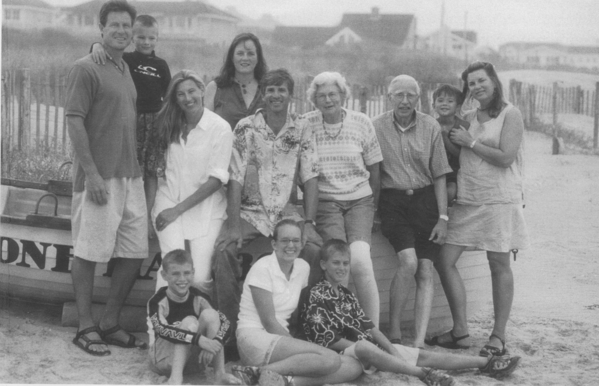
Helen also vividly remembered the family packing up to head to camp for a month each summer beginning when she was 7. To help his children experience summer camp, Dr. Norman worked as the camp doctor at Camp Mondamin and Camp Green Cove in Tuxedo, North Carolina, for a month each summer while his kids were growing up. Helen was a camper there for eight years and her brother was a camper for 10 years. They rode ponies, swam, made crafts and thoroughly enjoyed life at camp.
Helen also shared that her dad was “very measured and in control. Never to the extremes. Always well-thought-out when he spoke. You always wanted to listen to what he had to say.”
To that end, about 10 years ago Helen encouraged her father to share his story. “My dad wanted to get his ducks in a row and wrote a memoir.” In it, Dr. Norman shared that “research and teaching in allergic conditions has rewarded me with personal satisfaction and warm professional relationships with fellows and faculty at Johns Hopkins and elsewhere.”
In 2006, Marion passed away. Throughout their more than 50 years of marriage, she was extremely supportive of his career. In his memoir, while thanking his many research collaborators, Dr. Norman stated: “The only people I value more are Marion and the three children we raised and now our five grandchildren.” When he passed away, he also had two great-grandchildren.
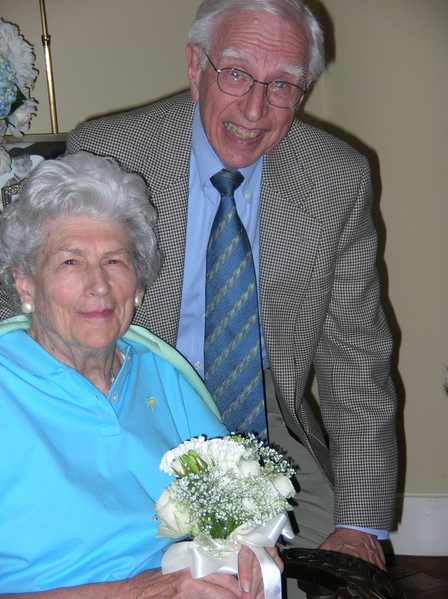
Building a Legacy
When Dr. Norman joined the faculty of the Johns Hopkins University School of Medicine in 1956, he started as an instructor in the Department of Medicine in the Division of Allergy and Infectious Diseases and set up a lab. He continued some of the research he started while at the Rockefeller Institute. This resulted in him creating a standardized ragweed extract dose for immunotherapy, known as AMb a 1, that was adopted by the FDA. This was just the beginning of his contributions to the field of allergy and immunology.
Throughout much of his career, Dr. Norman collaborated with Lawrence M. Lichtenstein, M.D., Ph.D., who joined him at Johns Hopkins in 1961. Together they conducted desensitization research that resulted in the development of a standardized immunotherapy treatment for ragweed allergy.
In 1970, Drs. Norman and Lichtenstein formed the Clinical Immunology Division at the Good Samaritan Hospital in Baltimore, Maryland. In 1989, the group became what is known today as the Johns Hopkins Asthma and Allergy Center. Over time, the group has grown to more than 40 full-time and affiliated faculty members, 25 fellows/visiting scientists and a staff of 150 involved in research, patient care and teaching. The division has also trained more than 50 physicians and 30 scientists and published more than 2,500 papers since 1970.
Dr. Norman was also an active member of the American Academy of Allergy, Asthma, and Immunology (AAAAI). He served as an executive committee member, treasurer and as president of AAAAI in 1975. And he went on to receive AAAAI’s Distinguished Service Award in 1985. Then, from 1993-1998, he served as an editor of the “Journal of Allergy and Clinical Immunology.”
As testimony to more than a half a century of service to patients and significant contributions to finding better treatments and cures for asthma and allergic disorders, Dr. Norman was recognized by the Johns Hopkins University School of Medicine through the dedication of the Philip S. Norman Library at the Johns Hopkins Asthma and Allergy Center.
Helen remembered when the library was named after him.
“There was a celebration and so many people got up and spoke about [my dad’s] contributions to their lives and careers. They shared what an inspiration he was and how wonderful he was to study under.”
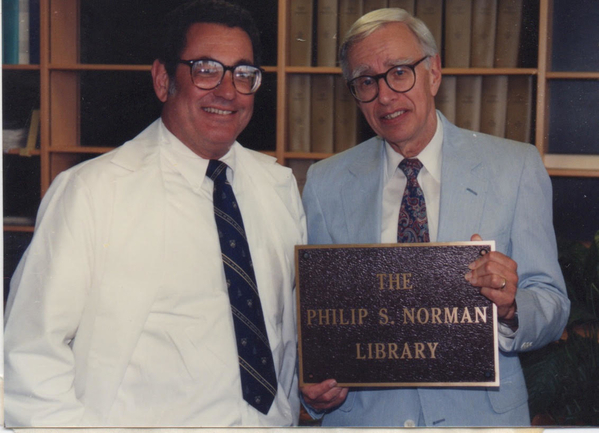
The recurring theme through everyone’s statements was that Dr. Norman encouraged them all to be their best.
Dr. Creticos shared this sentiment. “I was blessed to have had Dr. Norman as my mentor during my 30-plus years on the faculty at Johns Hopkins and will always be grateful for his guidance, support and friendship.”
Impact on AAFA
Dr. Norman’s impact extends well beyond his work at Johns Hopkins. He served on the board of directors of AAFA and many of its committees until April 2019.
“Dr. Norman will certainly be missed by all of us,” shared Kenneth Mendez, CEO and president of AAFA. “We are grateful for his exemplary service to AAFA through decades of national and chapter leadership.”
Dr. Norman served as chair of AAFA’s Scientific and Educational Council (now called the Medical Scientific Council) in the 1970s, received a Lifetime Achievement Award in 1999 and was designated director emeritus of the AAFA board in 2004.
As an AAFA director, he guided the organization’s research strategy in asthma and allergies. He was supportive of AAFA’s championship of patient-centered research and connecting research to the community.
“At my last face-to-face meeting with him, Dr. Norman expressed to me that our community work was critically important to patients and their families,” shared Melanie Carver, AAFA’s vice president of Community Health. “He understood the challenges people face and how they need support to live life fully.”
He also founded the Maryland-D.C. Chapter of AAFA more than 40 years ago and served on its board as director, president, chairman and chairman emeritus until 2018. AAFA’s chapters provide critical services, programs and support for people with asthma and allergies. They work locally with volunteers, health care providers and regional government. The volunteers that support the chapters are a vital part of AAFA, working directly in their regions.
When asked about Dr. Norman’s affiliation with AAFA, Dr. Creticos shared that he “contributed enormously to the growth and development of AAFA-MD in his role as medical director and board member. He recognized its importance as a resource to educate and provide valuable assistance to the allergic individual with respiratory conditions.”
Dr. Norman’s support for AAFA continued even after he passed away when his family collected donations to AAFA instead of flowers.
Many members of AAFA’s board of directors had an opportunity to work directly with Dr. Norman. They were deeply touched by his contributions and dedication to the asthma and allergy community.
“It was Phil Norman that sponsored my membership on the AAFA board, for which I will be forever grateful. He was an outstanding clinician and educator who made key research contributions to the detection and treatment of IgE-mediated disease,” shared Lawrence Schwartz, M.D. “In his AAAAI presidential address in 1976, he stated: ‘I have been developing the notion that the greatest pressure we will bear in the next decade is the need for change arising out of scientific advance.’ – something that is as true now as it was 43 years ago, not only for physicians and nurses but also for patients and caregivers.”
“He was a giant in the field and attentive to AAFA and our community until the end,” shared James Flood of Crowell & Moring, LLP.
“Dr. Norman was an inspiration and a pioneering advocate for people with asthma and allergic disease,” shared Mary Ellen Conley, RN. “It was an honor to serve on the AAFA board with him.”
Lasting Impact
Dr. Norman had a significant impact on the field of allergy research. He positively affected so many lives including patients, researchers, clinicians, friends and family.
Helen shared that “he was a super inquisitive man. He wanted to do something not everybody in science was doing.” He achieved that and more.
In his memoir, Dr. Norman shared that “research and teaching in allergic conditions has rewarded me with personal satisfaction and warm professional relationships with fellows and faculty at Johns Hopkins and elsewhere.”
If he was to advise other researchers and clinicians in the field of allergy and immunotherapy today, Dr. Creticos shared, “I think that he would emphasize that fellows-in-training and young faculty identify a mentor that they can work closely with, and who will provide them with not only the proper scientific guidance but also the latitude to be inquisitive and embark on a scientific journey that is both enjoyable and fulfilling.”
Thank you, Dr. Norman. You will forever be remembered.
To learn more about Dr. Norman’s research contributions, read the following publications:
- Legends in allergy: Philip S. Norman and Lawrence M. Lichtenstein—The Hopkins Experience from the April 2007 issue of the “Journal of Allergy and Clinical Immunology”
- Philip S. Norman and Lawrence M. Lichtenstein: The science of immunotherapy from the April 2007 issue of the “Journal of Allergy and Clinical Immunology”
- In lasting tribute: Philip S. Norman, August 4, 1924–August 2, 2019 from the October 2019 issue of the “Journal of Allergy and Clinical Immunology”

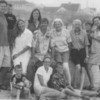
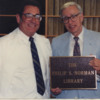


Comments (0)